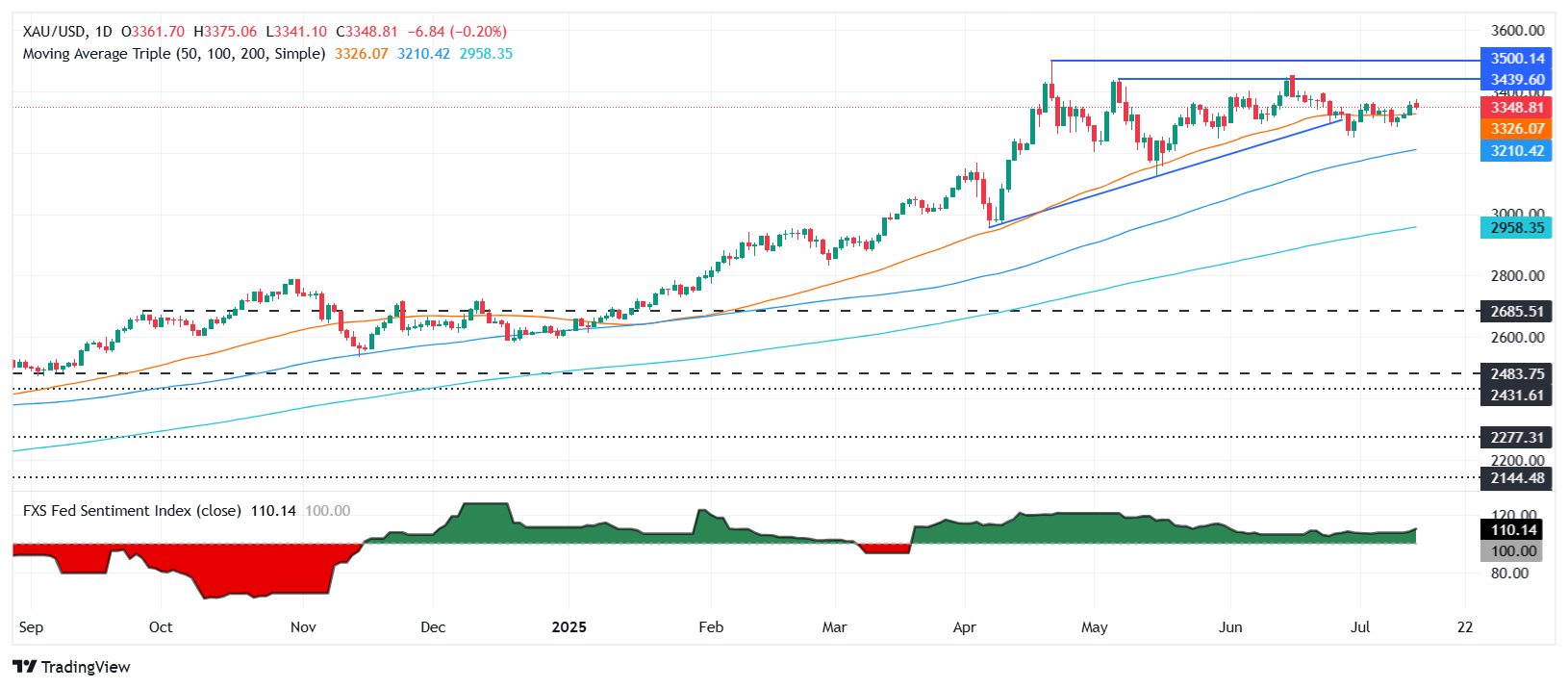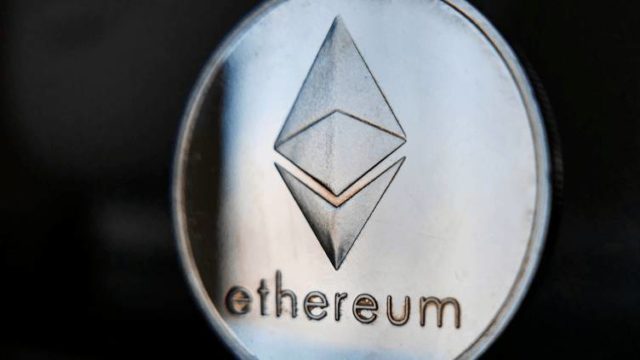- Gold is softened while Trump hints at dialogue with Europe and others.
- Trump imposes 30% tariffs on EU and Mexico, and contemplates 100% to Russia.
- Traders expect the US CPI, retail sales and new Fed comments this week.
The price of gold falls around 0.19% on Monday as the commercial war intensifies despite the current meetings with several fronts between the White House and the commercial partners, which now include the European Union (EU) and Mexico. At the time of writing, the XAU/USD quotes at $ 3,347.
On Saturday, US President Donald Trump applied 30% tariffs to EU and Mexico imported to the US. This shook the markets, pushing gold prices towards their daily maximum of 3,374 $. However, Trump’s recent statements that indicate their opening to commercial conversations, including those with Europe, weighed on precious metal prices.
Although the geopolitics had remained in the background, Trump said he would send more weapons to Ukraine and threatened “100%tariffs” to Russia unless they accepted a 50 -day fire, as Bloomberg revealed.
Traders’ eyes focus on the publication of inflation numbers in the United States (USA) and retail sales data. Along with this, Federal Reserve officials (FED) will be monopolized holders.
What moves the market today: gold slides down while the dollar is strengthened
- The price of gold has been consolidated in the 3,300 $ -3,350 $ area during the last days as commercial tensions increased after Trump imposed tariffs on several countries, including the commercial partners of the T-MEC, Canada, Mexico and the EU.
- The strength of the dollar is pressing precious metal prices. The US dollar index (DXY), which tracks the value of the dollar value against a basket of six currencies, rises 0.25% to 98.10.
- Another reason for the weakness of the Xau is that the yields of the US Treasury bonds are rising, with the 10 -year bonus increasing a base point to 4,427%.
- Investors are waiting for the publication of the June Consumer Price Index (CPI) in the United States. IPC is expected to jump 2.4% to 2.7% year -on -year. The underlying figure is expected by 3% year -on -year, above 2.8%, well above the 2% objective of the Fed. This justifies the current Fed monetary policy position, which has repeatedly stated that tariffs are prone to generate inflation, triggering another wave of inflation.
- This would exert pressure on the Fed, which until now has witnessed a sudden change of opinions on current monetary policy. The governors Waller and Bowman and the president of the Fed of San Francisco, Mary Daly, bowed to the Dovish side, waiting at least two feat cuts in 2025.
- CBOT data suggests that market participants expect 4 basic relaxation points by the FED towards the end of 2025. The data of the Chicago Board of Commerce revealed that market participants are looking at 49 basic points (PBS) of relaxation in 2025.
Xau/USD technical perspective: The price of gold is recovered to $ 3,350
The price of gold remains consolidated at the top of the range of 3,300 $ -3,350 $, with buyers accumulating some impulse. The relative force index (RSI) became bullish, but the market structure suggests that the yellow metal remains consolidated.
If gold exceeds $ 3,350, the next resistance would be $ 3,400. A rupture of the latter exposes the level of $ 3,450, before the historical maximum of $ 3,500. On the contrary, a fall below $ 3,300 would open the way to test the 100 -day SMA at $ 3,246, followed by $ 3,200.

GOLD – FREQUENT QUESTIONS
Gold has played a fundamental role in the history of mankind, since it has been widely used as a deposit of value and a half of exchange. At present, apart from its brightness and use for jewelry, precious metal is considered an active refuge, which means that it is considered a good investment in turbulent times. Gold is also considered a coverage against inflation and depreciation of currencies, since it does not depend on any specific issuer or government.
Central banks are the greatest gold holders. In their objective of supporting their currencies in turbulent times, central banks tend to diversify their reserves and buy gold to improve the perception of strength of the economy and currency. High gold reserves can be a source of trust for the solvency of a country. Central banks added 1,136 tons of gold worth 70,000 million to their reservations in 2022, according to data from the World Gold Council. It is the largest annual purchase since there are records. The central banks of emerging economies such as China, India and Türkiye are rapidly increasing their gold reserves.
Gold has a reverse correlation with the US dollar and US Treasury bonds, which are the main reserve and shelter assets. When the dollar depreciates, the price of gold tends to rise, which allows investors and central banks to diversify their assets in turbulent times. Gold is also inversely correlated with risk assets. A rebound in the stock market tends to weaken the price of gold, while mass sales in higher risk markets tend to favor precious metal.
The price of gold can move due to a wide range of factors. Geopolitical instability or fear of a deep recession can cause the price of gold to rise rapidly due to its condition of active refuge. As an asset without yield, the price of gold tends to rise when interest rates lower, while the money increases to the yellow metal. Even so, most movements depend on how the US dollar (USD) behaves, since the asset is quoted in dollars (Xau/USD). A strong dollar tends to keep the price of gold controlled, while a weakest dollar probably thrusts gold prices.
Source: Fx Street
I am Joshua Winder, a senior-level journalist and editor at World Stock Market. I specialize in covering news related to the stock market and economic trends. With more than 8 years of experience in this field, I have become an expert in financial reporting.







